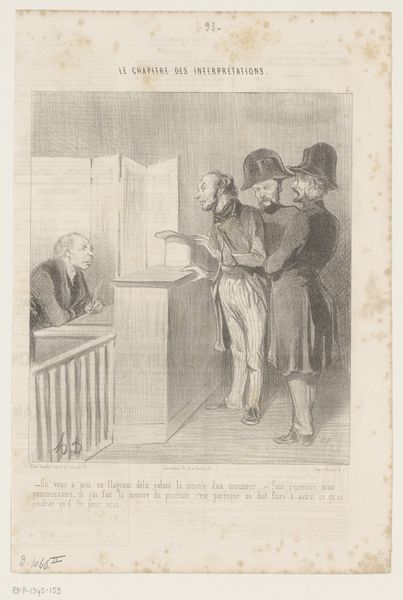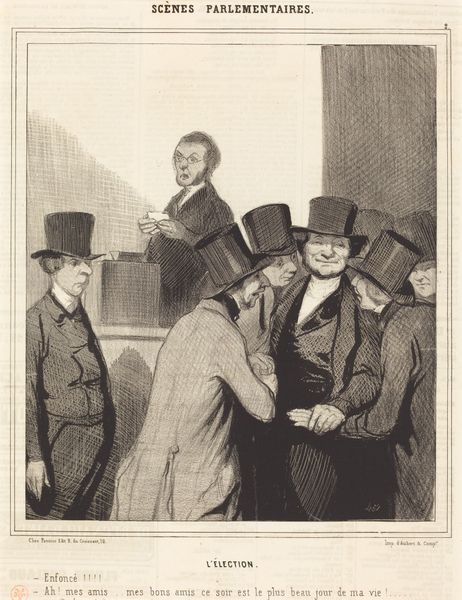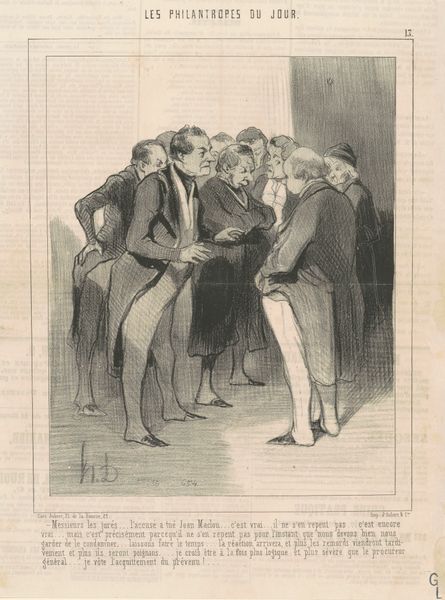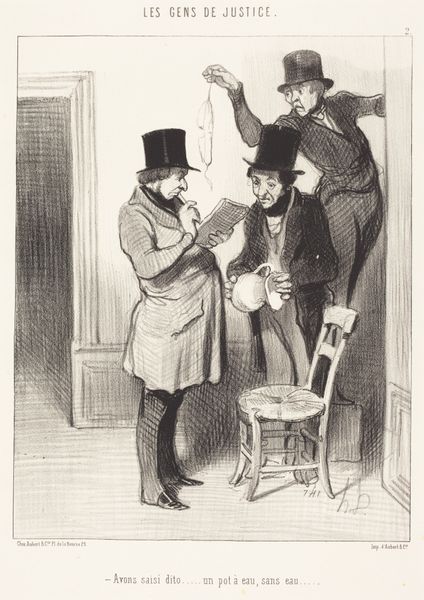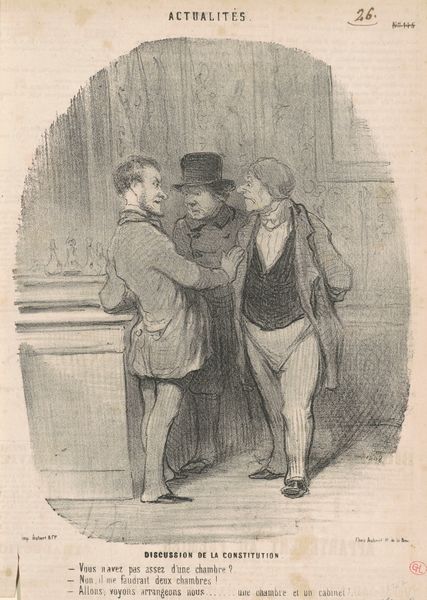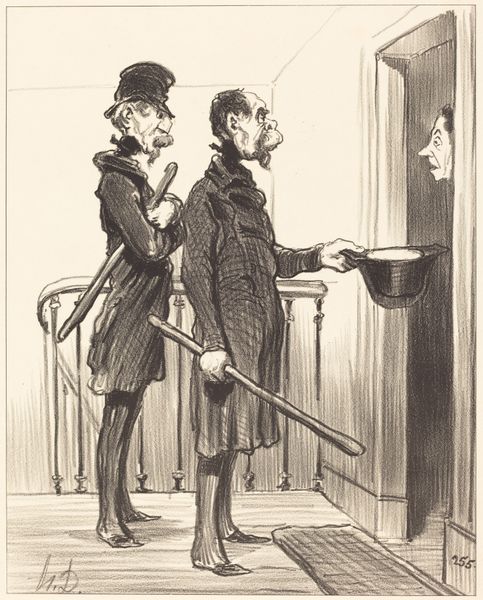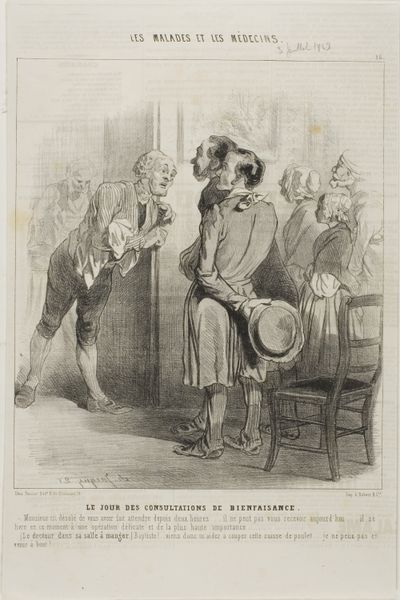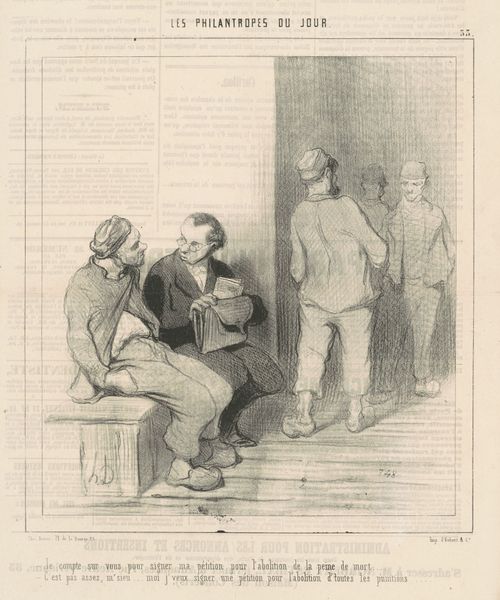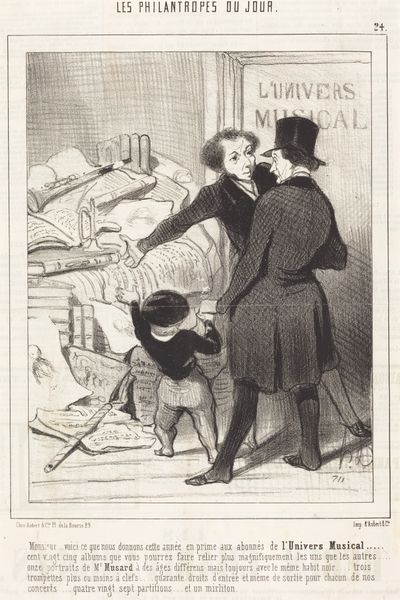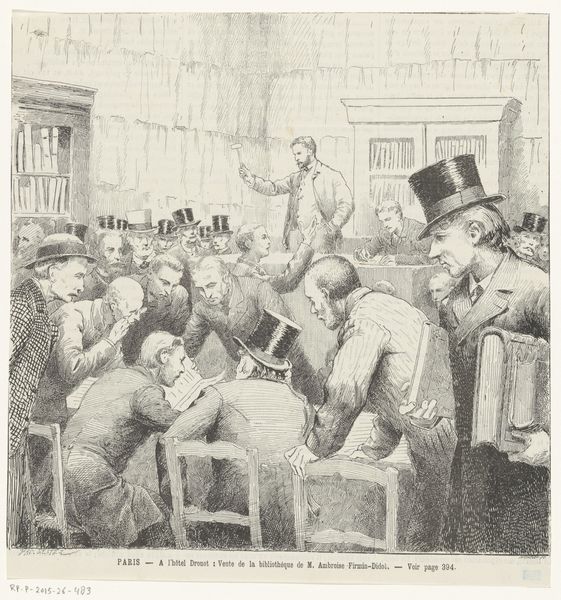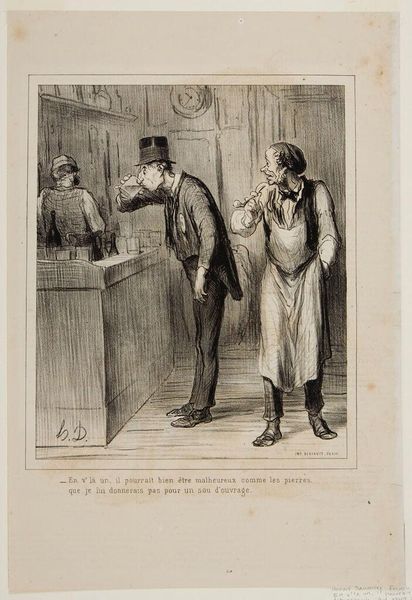
drawing, lithograph, print, pen
#
drawing
#
lithograph
# print
#
caricature
#
romanticism
#
pen
#
genre-painting
Copyright: National Gallery of Art: CC0 1.0
Curator: The lithograph, "On vous a pris en flagrant délit..." by Honoré Daumier, dating back to the 19th century, presents a rather comical scene. The scratchy pen strokes and linear forms of the drawing are clearly visible within the print, and I am instantly struck by how this detailed drawing was then transferred into a print for distribution. What captures your attention initially? Editor: Well, first, the caption really shapes the way I view the characters. It humanizes them, especially the thief on the stand and almost creates a dialogue of different ethical approaches to the idea of “doing unto others”. I notice the clear class differences suggested by the clothing; and the materiality of justice is stark. How does Daumier's use of lithography impact our understanding of the social commentary being made? Curator: Precisely. Lithography allowed for a wide distribution of these images, reaching a broader audience. This challenges traditional art boundaries. These prints became a form of accessible social commentary, a 'poor man's painting' in a sense. Think about the labour involved. The artist draws directly onto the stone, then the printers reproduce it en masse. It moves art out of the gallery and into the hands of the public, doesn't it? Editor: Yes, that makes a lot of sense! By making art reproducible, it democratizes the conversation, almost as though Daumier knew he needed this social commentary to circulate widely! That he found a material means to deliver on this need speaks volumes about the intersection of message and making. The style appears rooted in Romanticism which makes this act of democratization feel even more radical. Curator: Exactly! It forces us to confront the realities of production and consumption, the artistic skills, labor, and the intended social function behind these caricatures. Editor: That's fascinating! It makes you consider who consumed these images, and how their social standing affected their interpretation. I’ll definitely view Daumier's work with a new appreciation for the social context in which they were produced.
Comments
No comments
Be the first to comment and join the conversation on the ultimate creative platform.
